Buddhist temples are always a meaningful place to visit in Southeast Asia, and Laos is no exception. Vientiane, the capital city, is home to many such temples, and we spent some time exploring a few of them.
The first we visited was Wat Si Muang, a temple named after a young woman who, according to legend, sacrificed herself to appease angry spirits. When the temple was being built in 1563, a pregnant Si Muang threw herself into a hole in the ground, where she was crushed beneath a massive pillar lowered during construction. Though the temple has been destroyed and rebuilt over the centuries, the story endures,and Wat Si Muang is still known today as the “Mother Temple” of Vientiane.



To enter, you pass through towering golden gates, adorned with symbols of Lao Buddhism. Every building inside the complex is intricately decorated; golden and red carvings line the walls and doors, with stunning attention to detail. Golden Buddha statues are everywhere: some standing tall, others reclining to represent the Buddha’s final moment of Enlightenment. Nagas, the protective serpent spirits of Southeast Asian lore, watch over the Buddhas and guard every gate and doorway.

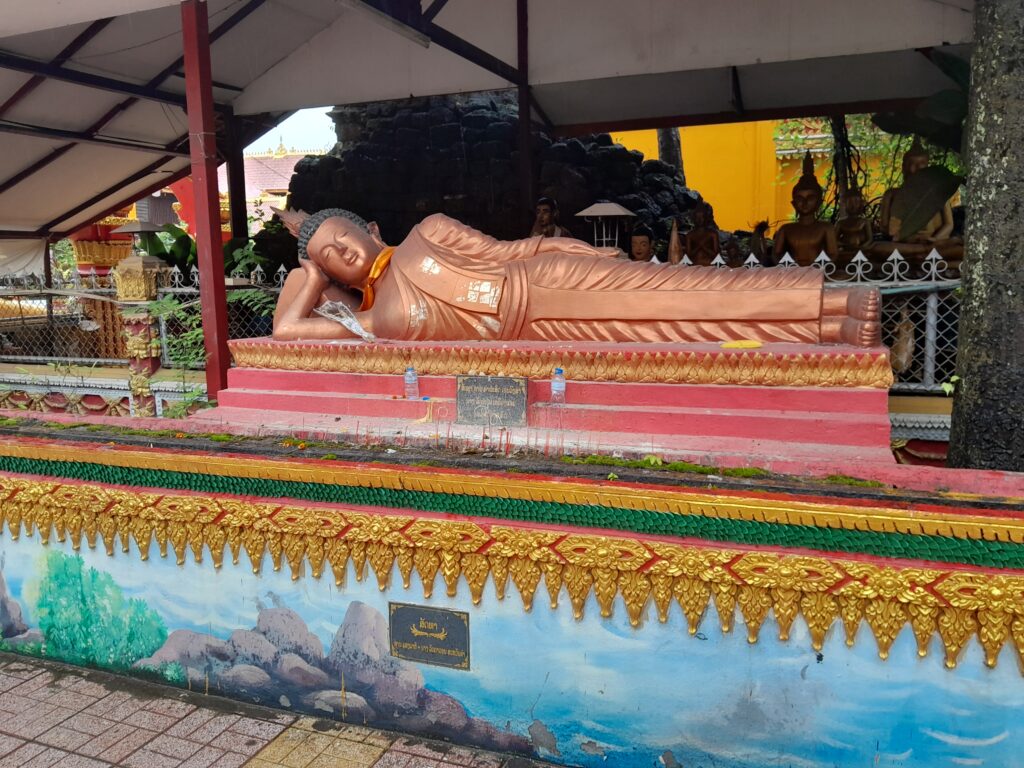
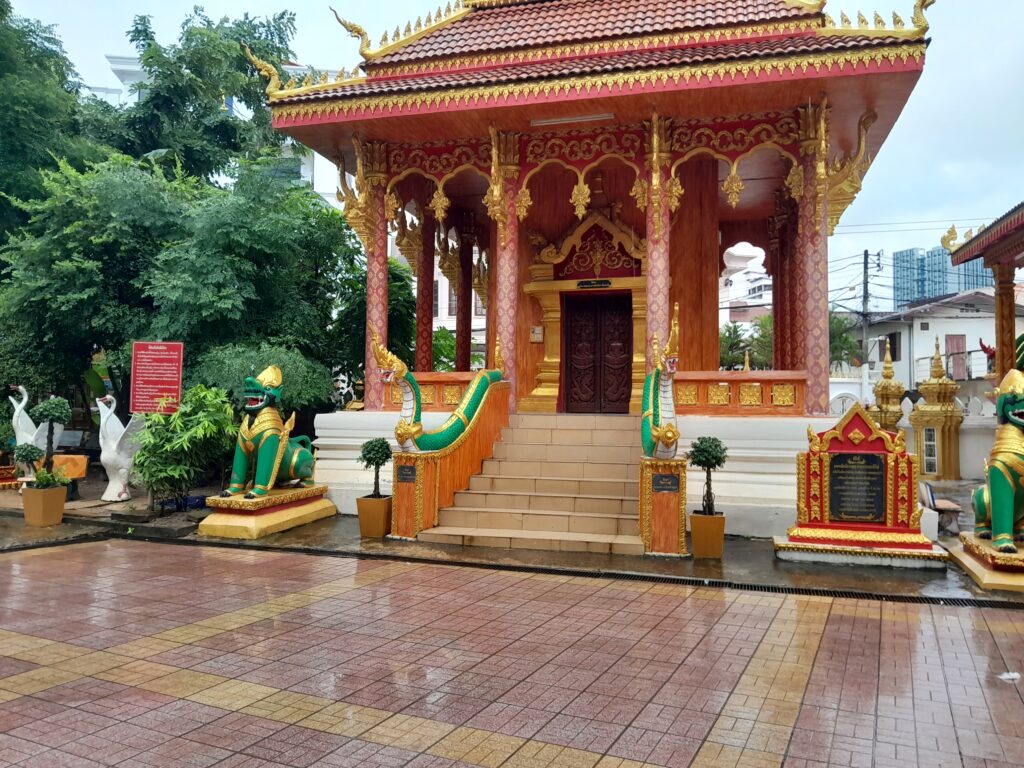
What struck me most about Wat Si Muang was how alive it felt. Unlike some temples I’ve visited -especially in China, where the focus is often on tourism – the temple was being used. Worshippers were gathered in prayer, monks moved through the grounds in quiet focus, and locals came to carry out their rituals. The air felt reverent, but not showy. This wasn’t a tourist attraction that happened to be sacred. It was a sacred place, first and foremost.
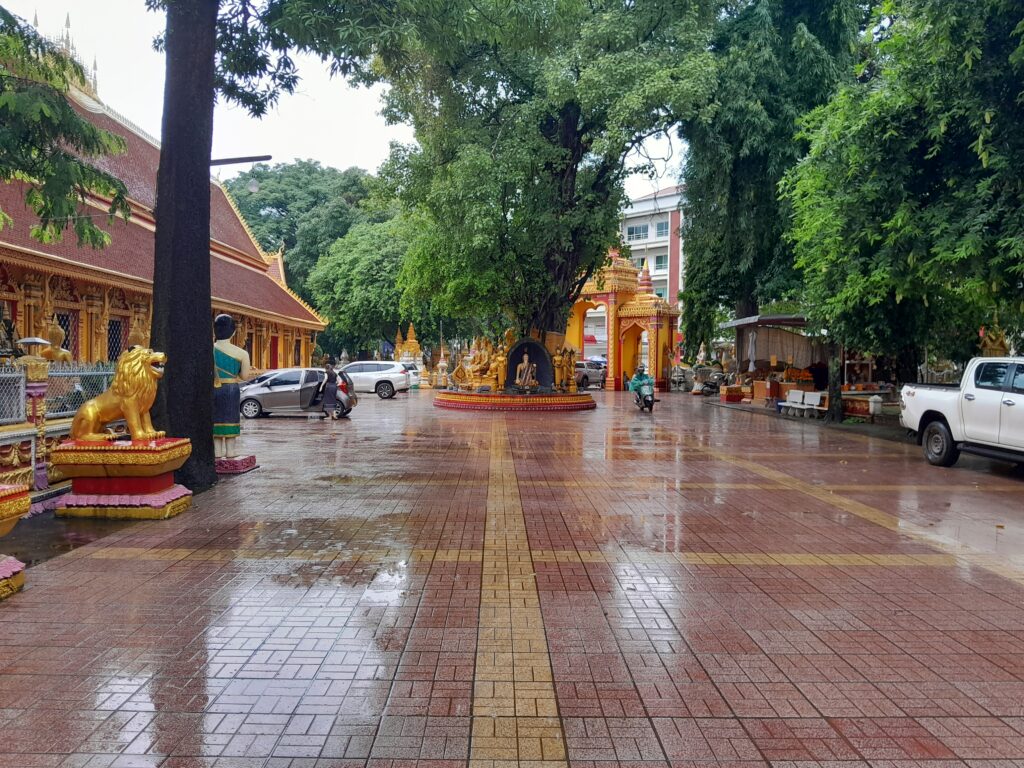
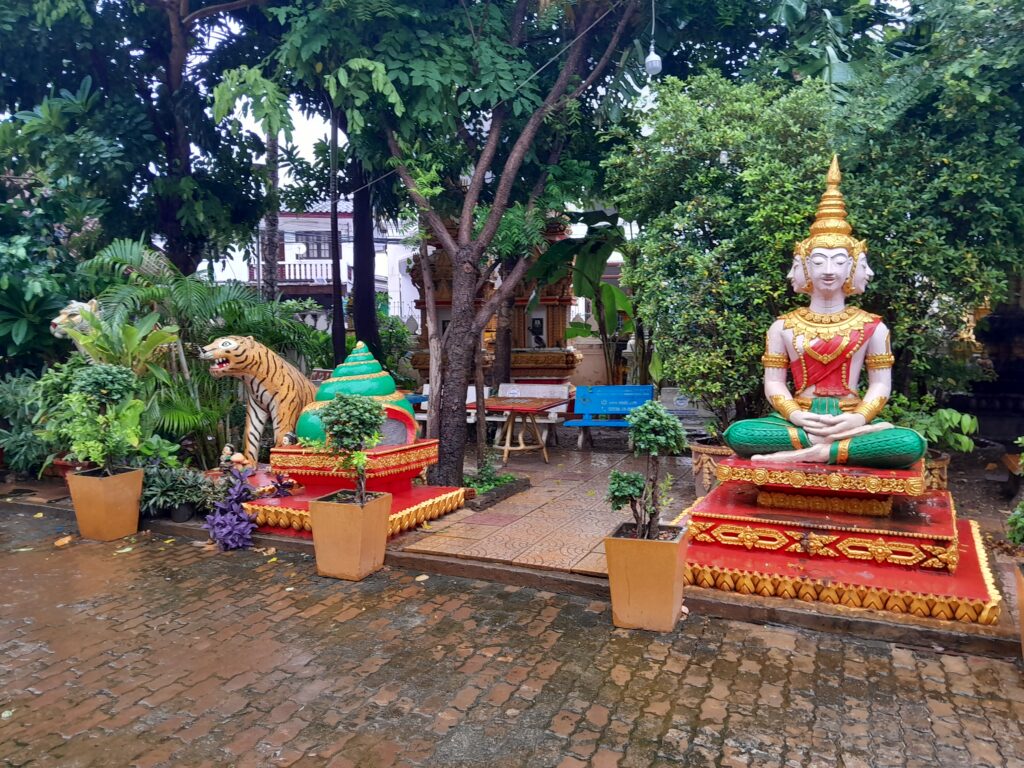
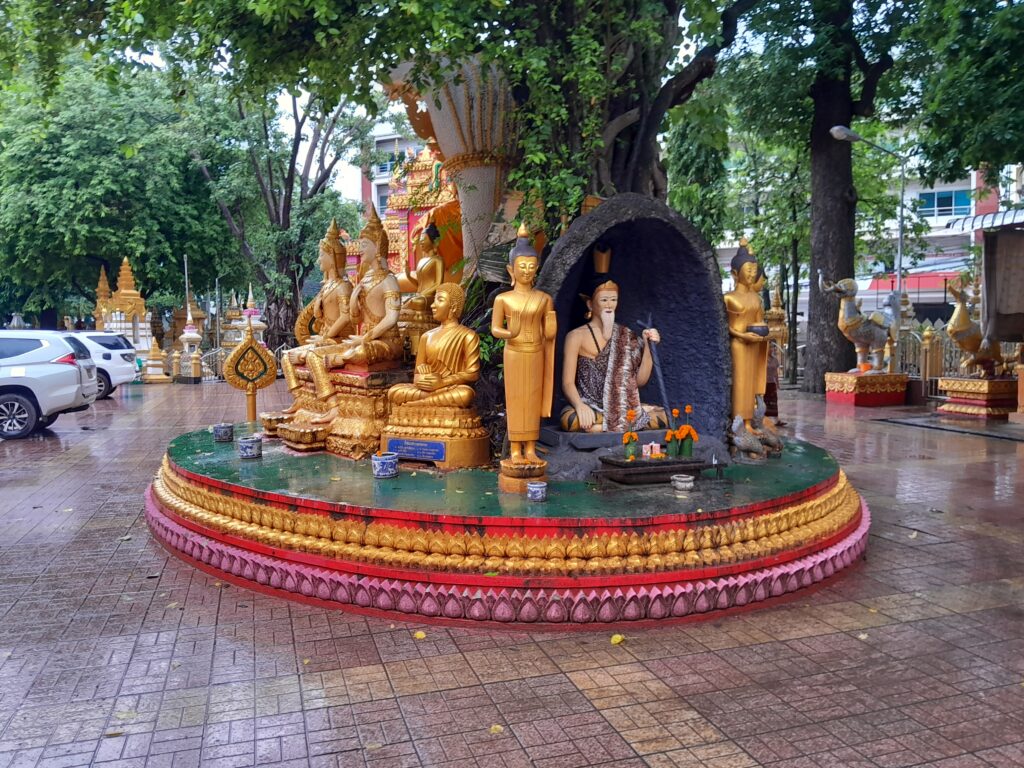
Though offerings are welcomed, the monks didn’t solicit donations as you sometimes see in more commercialised temples. Here, offerings felt meaningful, something given from faith, not obligation.
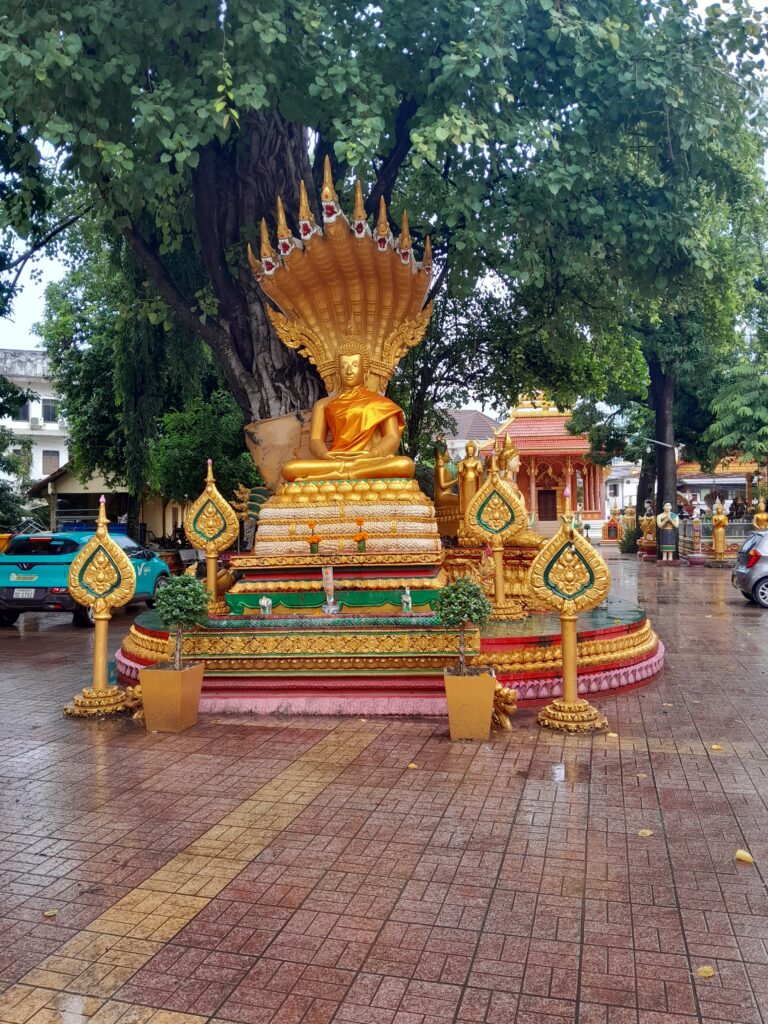
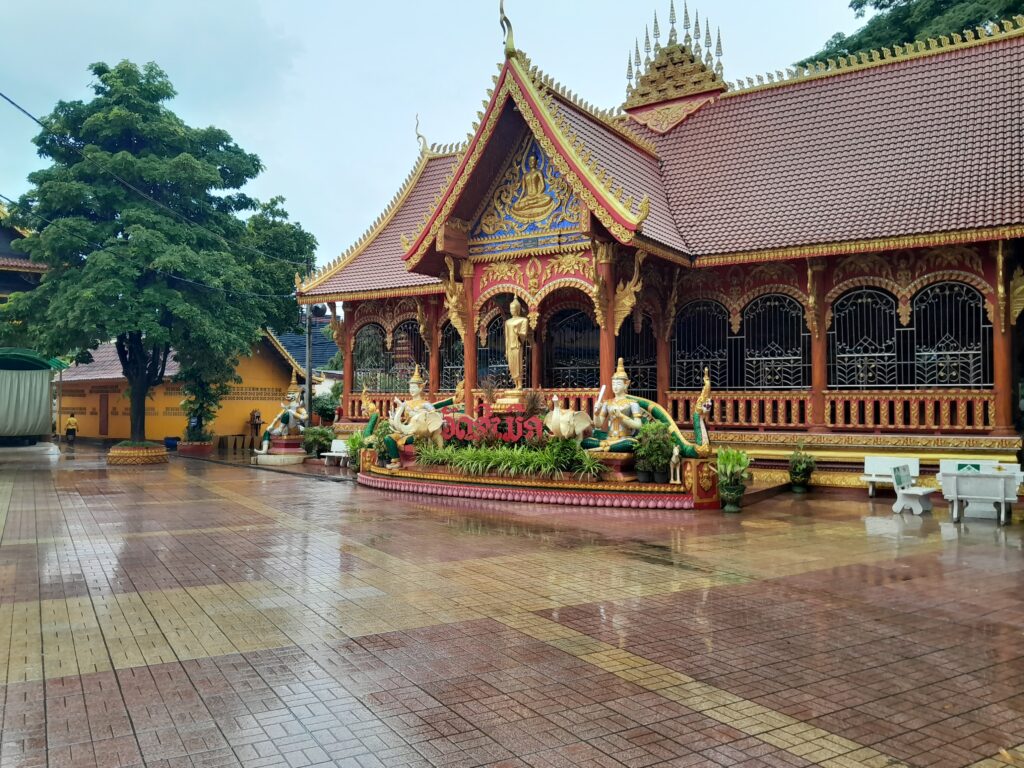

This was just the first of many temples we visited in Laos, and that sense of devotion would be something I noticed again and again. For many Laotians, Buddhism isn’t just a philosophy. It’s a living faith, woven into their everyday lives.



